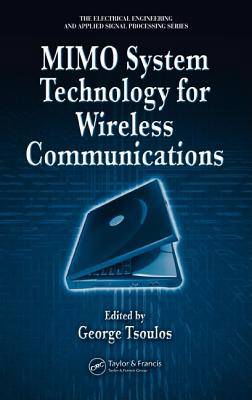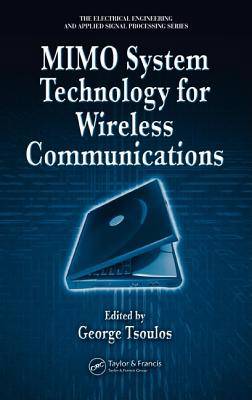
- Retrait gratuit dans votre magasin Club
- 7.000.000 titres dans notre catalogue
- Payer en toute sécurité
- Toujours un magasin près de chez vous
- Retrait gratuit dans votre magasin Club
- 7.000.0000 titres dans notre catalogue
- Payer en toute sécurité
- Toujours un magasin près de chez vous
Mimo System Technology for Wireless Communications
175,95 €
+ 351 points
Description
For broadband communications, it was frequency division multiplexing. For optical communications, it was wavelength division multiplexing. Then, for all types of networks it was code division. Breakthroughs in transmission speed were made possible by these developments, heralding next-generation networks of increasing capability in each case. The basic idea is the same: more channels equals higher throughput. For wireless communications, it is space-time coding using multiple-input-multiple-output (MIMO) technology. Providing a complete treatment of MIMO under a single cover, MIMO System Technology for Wireless Communications assembles coverage on all aspects of MIMO technology along with up-to-date information on key related issues. Contributors from leading academic and industrial institutions around the world share their expertise and lend the book a global perspective. They lead you gradually from basic to more advanced concepts, from propagation modeling and performance analysis to space-time codes, various systems, implementation options and limitations, practical system development considerations, field trials, and network planning issues. Linking theoretical analysis to practical issues, the book does not limit itself to any specific standardization or research/industrial initiatives. MIMO is the catalyst for the next revolution in wireless systems, and MIMO System Technology for Wireless Communications lays a thorough and complete foundation on which to build the next and future generations of wireless networks.
Spécifications
Parties prenantes
- Editeur:
Contenu
- Nombre de pages :
- 394
- Langue:
- Anglais
- Collection :
Caractéristiques
- EAN:
- 9780849341908
- Date de parution :
- 28-03-06
- Format:
- Livre relié
- Format numérique:
- Ongenaaid / garenloos gebonden
- Dimensions :
- 162 mm x 236 mm
- Poids :
- 666 g

Les avis
Nous publions uniquement les avis qui respectent les conditions requises. Consultez nos conditions pour les avis.





